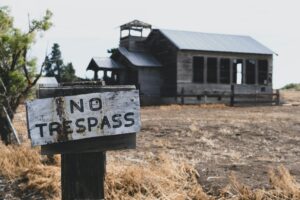Good morning.
Thursday in Whitewater will be partly sunny with a high of 79. Sunrise is 5:57 AM and sunset 8:01 PM for 14h 03m 58s of daytime. The moon is full with 99.7% of its visible disk illuminated.
Whitewater’s Community Development Authority meets at 4:30 PM.
On this day in 1919, the Packers are founded: “On this date the Green Bay Packers professional football team was founded during a meeting in the editorial rooms of Green Bay Press-Gazette. On this evening, a score or more of young athletes, called together by Curly Lambeau and George Calhoun, gathered in the editorial room on Cherry Street and organized a football team.”
Good data are hard to find. They exist, but in these fact-bending times, they’re often left in the brush while lies and lunacy stroll across the savannah. Good demographic information isn’t everything, but it is a better beginning than fantastical theories about ivermectin, election fraud, or a supposed deep state. They’re a solid starting point for examining a place (county, state, or city). From that start, one then examines interactions beyond demography, and this examination, while more personal, itself requires a foundation of fact and theory derived therefrom.
For today, some general (national) demographic data. William Frey examines the latest population estimates and writes that White and youth population losses contributed most to the nation’s growth slowdown, new census data reveals. While losses of the White population may be culturally notable, the losses among youth are economically notable:
Now, newly released Census Bureau estimates allow us to examine these shifts via specific race-ethnic and age groups. Unlike the 2020 census data, these estimates permit analyses of annual population change.[1]
This report focuses on annual changes from July 2016 to July 2017 through July 2020 to July 2021. This period includes three years prior to the pandemic, one year with partial pandemic exposure (2019 to 2020), and one year with full pandemic exposure (2020 to 2021). This allows for an assessment of race-ethnic and age shifts before and during the pandemic.
This is also a significant period because, as a previous report shows, the nation’s white population began to decline in 2016.[2] This initial white population loss occurred before the pandemic and is related to the aging of the white population, which has led to fewer births and more deaths—losses that are projected to continue. And as shown below, the pandemic has exacerbated this white population loss.
The examination of age shifts shows a loss of young people under age 18 and those in their prime working ages (18 through 59). Moreover, when looking at age and race, it becomes clear that nonwhite Americans, especially Latino or Hispanic Americans, comprise larger shares of the population at all ages.
This report also revisits earlier analyses of notable population declines in large metro areas and big cities. It shows that most of those declines are due to white population losses, both from the national white population decline as well as white population movement to smaller-sized places.
While these trends are exaggerated in the prime pandemic year, it is plain to see that the nation is facing a long-term transition toward greater diversity and aging, both nationally and across large swaths of the country.
The particular racial or ethic composition of a place matters as nothing compared with an overall population loss, especially among younger people. The former is an interesting cultural matter; the latter is a cause of relative or absolute economic decline. If you’re living in a town where young people want to move away, you’re living in a declining town. Significant population gains some small towns are getting from big-city émigrés have not happened for Whitewater.
There are in Whitewater and other places those residents who think that life would be better with fewer people, or fewer people who are different from the residential majority. These are people who don’t understand that ghost town is an undesirable condition.

Photo by Dan Meyers on Unsplash
‘Firenado’ sparked by hot winds and wildfires burns in California:

